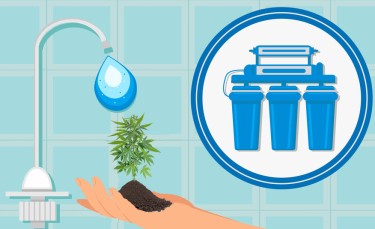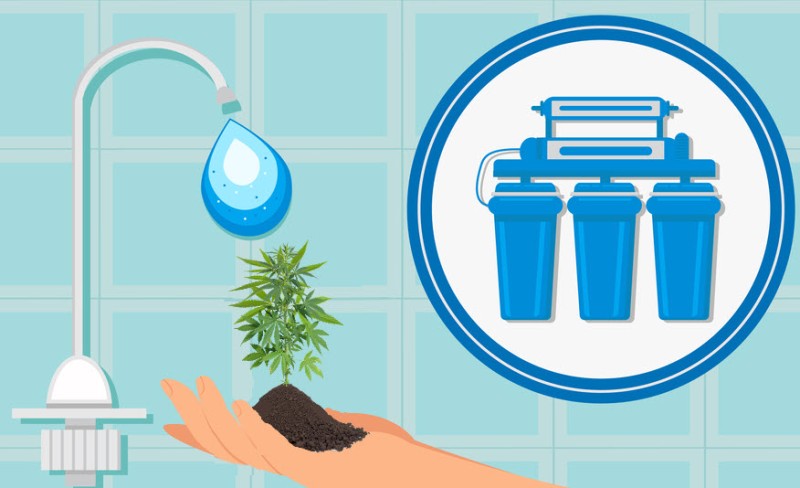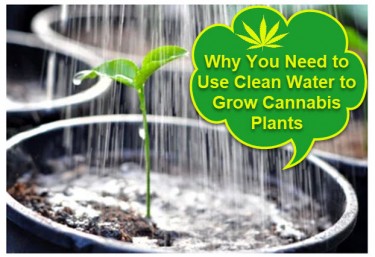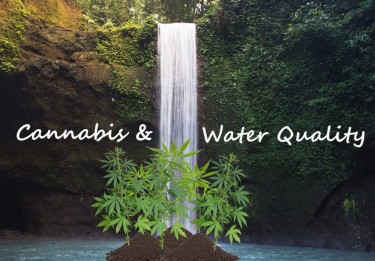
Everyone desires the best for their marijuana plants, and purified water can produce that. Let's look at reverse osmosis and analyze its benefits for us and our cannabis cultivating goals. A lot of controversies have arisen about whether using a reverse osmosis system is the optimum option for irrigating your cannabis plants or not. Several growers have said that there isn't much point in using water that has been purified through reverse osmosis, but not everyone agrees.
General Overview Of Reverse Osmosis
Reverse osmosis (RO) is a technique for purifying water. It is frequently used in homes in water filtration systems to eliminate impurities and make fresher tasting water for drinking. A reverse osmosis water system uses a semi-permeable membrane to discard unwanted molecules, ions, and unnecessary particles from the water our plants and we consume. The advantages of reverse osmosis for cannabis plants are that it is devoid of the existence of contaminants, impurities, and salts. Reverse osmosis water is debatably the purest type you can make available to your cannabis plants.
Although the purpose of making use of reverse osmosis water to cultivate cannabis is not to deny your plants nutrients, it is instead to fine-tune them. By beginning with a purified water sample, growers can include nutrients such as calcium, magnesium, and NPK with remarkable accuracy, paving the way for ideal development and optimal feeding.
Meanwhile, water that is not yet purified, like tap water or ordinary city water, will have a distinct mineral profile, which means growers will need to assess the quality of the water to precisely add nutrients to ensure they are not overfeeding their plants.
Benefits of RO Systems
A quick rundown of the benefits of reverse osmosis:
-
It can be utilized by home planters.
-
It allows planters to put in nutrients with incredible precision.
-
It gets rid of most contaminants, salts, and impurities.
There are various advantages to very pure water that can benefit your weed planting endeavors. A majority of water sources already possess nutrients and minerals dissolved in them. With an electrical conductivity meter, also known as an EC meter, you can measure the number of nutrients and minerals in them. It is very hard to precisely determine the ratios of nutrients already present, which makes the process of including extra nutrients a lot less precise to boot.
Nevertheless, in eliminating every impurity from your water, you begin at zero and will then be able to attain the ideal nutritional balance for your plants. Maybe even more crucially, purifying your water eliminates possibly dangerous chemicals or harmful pests, which will at the barest minimum, enhance the health of your plants, and at the most, could save their lives.
Using reverse osmosis water
When you are left with a pure water sample, weed planters will have the chance to tweak the nutrient content to their liking, or rather, to the plants' liking, all without the danger of unknown levels of minerals and the presence of contaminants.
Although this technique provides you with the liberty of creating unique water for your plants, there are still several weed growers who do not support the use of reverse osmosis water because, as they say, it removes the natural facet of growing cannabis. Hence, based on your feelings or points of view on this sentiment, you are free to decide if you want to use reverse osmosis water in your cultivation or not. Given this, it might be more appealing to growers who have lots of experience and are seriously looking to maximize the potential of their plants.
How Reverse Osmosis Systems Work
The procedure of making purified water with the use of reverse osmosis system filters is honestly quite easy. The pressure of water functions to push tap water through a membrane, and in the process of being pushed through, contaminants and impurities are eliminated.
A few of the more generally seen impurities in tap water include detergents, lead, fluoride, chloramine/chlorine, pesticides, and nitrates/sulfates. A reverse osmosis machine of good quality gets rid of all these and more, ensuring your plants remain happy.
Installing a Reverse Osmosis System
The specific installation steps depend on the reverse osmosis machine you've got. Nevertheless, here's an essential guide to doing it with an under-sink installation:
Step 1: Suspend the filter assembly kit at the height stated by the user manual.
Put off the cold and hot water shutoffs and install the saddle valve included in the unit.
Step 2: To ensure the color-coded water supply won't get kinked, it should be cut. Attach the added plastic tubing to the supply valve (make use of pictorial illustrations and in the manual).
Step 3: Shorten the waste lines/water supply to reduce the amount of tubing.
Do not be in haste to cut the sizeable black waste line.
Step 4: Join the reverse osmosis system lines to the fittings at the base of the faucet. To prevent sink backups, the black waste lines are fed through the base of the faucet, but they carry no link to the supply.
Step 5: Tighten the faucet to the sink, then insert the drain line adapter beneath the sink basket. To ensure it flows downhill with no loops, cut the waste line, then push it into the adapter.
Step 6: Install the final water line after setting the storage tank in place. Clean and top up the system as stated in the manual.
Bottom Line
There are two trains of thought on whether RO water should be used; one views RO as an intelligent method of fine-tuning nutrition and eliminating contaminants for improved plant health, and the other terms it as unnatural and refuses to accept the method of filtration. Although weed has lived and survived for millennials without stylish filtration techniques, amateur growers can produce top-quality crops without using RO. But if you're an experienced grower looking for extra control, this method is for you. Regardless if whichever method you choose to go with, always remember that your cannabis needs to be watered at least once in two day.
WATERING YOUR PLANTS, READ MORE..
WHY YOU NEED CLEAN WATER TO GROW CANNABIS PLANTS!








